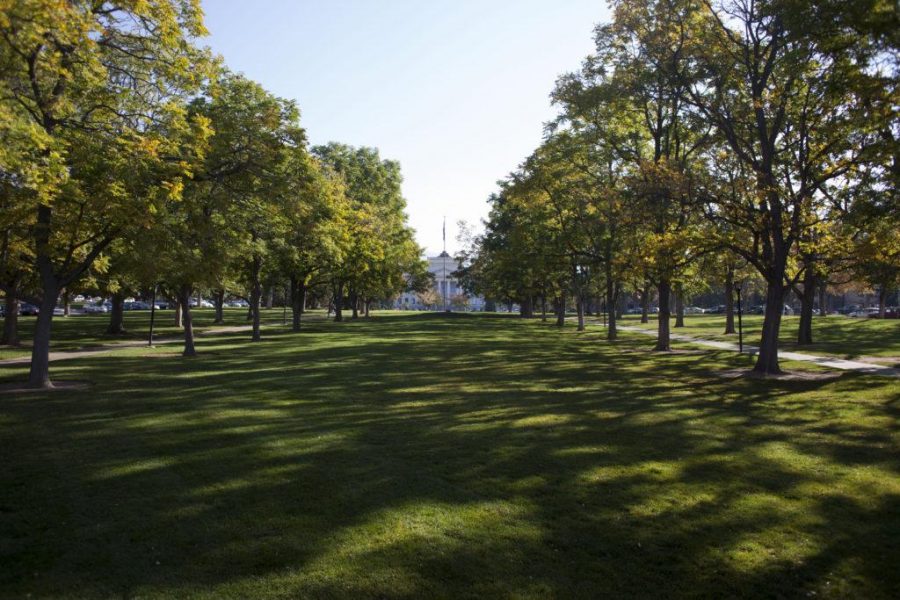The majority of University of Utah students don’t know where to report a sexual assault, what happens once they make that complaint or where victims can get support and help on campus, according to the U’s 2016 Campus Climate Survey. After a string of reportedly mishandled sexual assault cases by the U and a federal investigation looking into the U’s actions, President David Pershing created the Campus Safety Task Force. The task force was intended to improve the school’s response to sexual violence and make resources more accessible to victims.
“Let me be clear, there is no place for violence, sexual harassment or sexual assault at the University of Utah,” Pershing said in a statement about the task force’s findings. “It is a high priority for me and all the members of my administrative team to do all that we can to support those who experience trauma — in any form — and at the same time to promote awareness of and educate campus community members about our expectations for our campus culture.”
The committee included students, faculty, staff and administrators. It met six times between Jan. 10 and March 28, while several subcommittees convened more frequently. To assist in its deliberations, the task force hosted several listening sessions on campus and at Health Sciences. In May, the U approved the group’s numerous recommended changes for the upcoming school year and beyond.
Beginning at the latest in Fall 2018, the U will require all students to undergo online training surrounding the issues of sexual assault before they can register for classes. The administration will also mandate that faculty and staff complete anti-discrimination, sexual harassment prevention and bystander intervention training.
“This is a campus community issue and concern, and it certainly impacts all of us, even if we’re not an individual who is personally subjected to violence,” said Vice President for Student Affairs and Committee Co-Chair Barb Snyder.
To connect students to resources more easily, the U will create a centralized website focusing on campus safety. The website’s purpose is to consolidate all campus and community resources for victims of sexual assault, while providing education to help prevent violence.
“One thing that I realized in this process is if students need some information, that’s the one thing they’re going to do — go to the internet,” said Michele Ballantyne, who co-chairs the task force and works at the U’s general counsel office. “We found that we had a lot of resources, but not really a central place to find them.”
A standalone presence on the home page of the U’s website will link students to the main page, which will include a mission statement with video clips from campus leaders discussing the school’s commitment to campus safety. Students will navigate the website with tabs for pages addressing sexual assault reporting and prevention, emergency and physical safety, campus climate and diversity as well as training.
A widget on the website will display social media posts using hashtags from a year-long awareness campaign. The U will use its platform to promote the new website and educate students on matters related to sexual assault.
Between Fall 2015 and Fall 2016, the U’s Center for Student Wellness saw an 182 percent increase in new clients. To ensure that there are enough resources to handle the growing volume of reported sexual assault cases, the U will hire an additional victim advocate for the Center for Student Wellness. As recommended by numerous students, it will also raise the Women’s Resource Center staff counselor to full time. According to the task force’s report, the U’s Dean of Students Office is severely understaffed compared to other Pac-12 institutions. To address this, it will hire a new case manager and an additional conduct staff member.
The U is working with the University Police Department (UPD) to increase the physical safety of campus through increased infrastructure. Facilities management is working on replacing numerous lights around campus, and the U plans to install more lights while campus officials develop an app for students to report lighting issues. UPD is in the process of updating the security camera system at the U. Both groups are cooperating to update locks in the older buildings on campus.
Altogether, these changes will cost the U nearly $400,000. The university plans to hold more listening sessions and conduct an annual analysis of the progress of the recommendations. In coming years, the U plans to make more changes to increase students’ safety.
“Is our work complete?” Pershing questioned. “No, there is more to do to strengthen safety on our campus and support the needs of those who have experienced trauma.”


